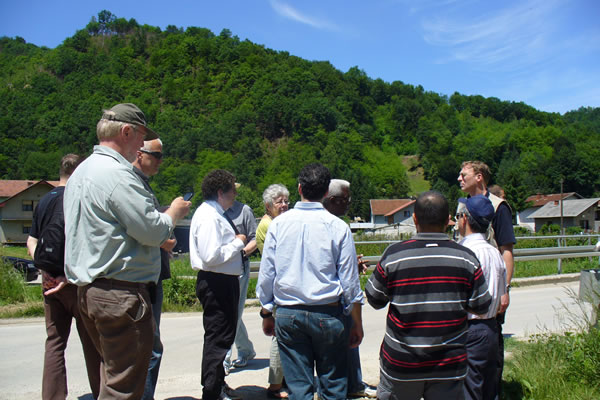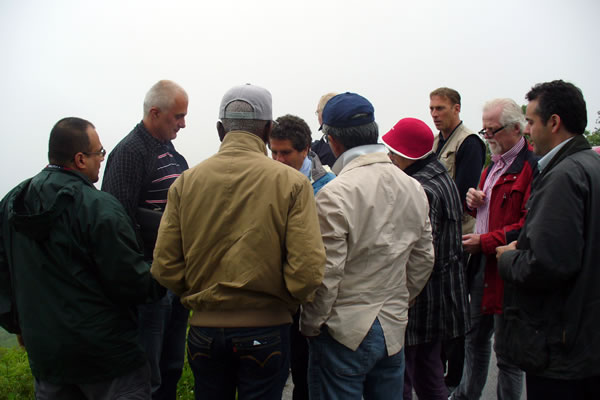Home
PREPARING THE JUDGES’ CRIME SCENE INVESTIGATION IN SREBRENICA
A month after Radovan Karadzic’s Trial Chamber visited the Srebrenica area, the Tribunal has unsealed the documents detailing the preparations for the visit to the sites of the gravest crime the former Republika Srpska president is charged with
 Tribunal officials during visits to the sites where, as alleged in the indictment, more than seven thousand Bosniak men and boys were captured, detained, executed and buried in mass graves in July 1995.
Tribunal officials during visits to the sites where, as alleged in the indictment, more than seven thousand Bosniak men and boys were captured, detained, executed and buried in mass graves in July 1995. The Trial Chamber hearing the case against the former Republika Srpska president Radovan Karadzic visited the Srebrenica area earlier this June. The details of the visit were initially kept confidential for security reasons. The documents made public today pertain to the preparations of the judges ‘crime scene investigation’ in Srebrenica. They reveal the details about the planning of the visits to the sites where, as alleged in the indictment, more than seven thousand Bosniak men and boys were captured, detained, executed and buried in mass graves in July 1995.
Earlier this year, the parties were invited by the Trial Chamber to put forward their representatives which would visit the Srebrenica area with the four judges: Kwon, Morrison, Baird and Latanzzi. The prosecution was represented by Julian Nicholls, while Karadzic was represented by his legal adviser, Peter Robinson, as the judges had denied the request of the accused who had wanted to join them himself. The judges and the parties were accompanied by Karadzic’s stand-by counsel, Richard Harvey.
The prosecution and defense were invited by the Chamber to submit their proposals for the sites that should be visited. The prosecution list contained 23 such sites: from Crna Rijeka, where the VRS Main Staff was located, through Srebrenica and Potocari, to the various sites where Muslims were captured, provisionally detained, executed and buried in mass graves in the municipalities of Bratunac and Zvornik.
Only four of the 24 proposed sites on Karadzic’s list are mentioned in the indictment. In order to facilitate the understanding of ‘context of the events in Srebrenica’, Karadzic suggested that the judges visit 16 sites where ‘Muslim forces from Srebrenica’ committed crimes against Serbs in 1992 and 1993, as he alleges, and four sites where there was fighting that resulted in ‘legitimate military casualties’ in 1995. The judges nevertheless decided to visit the sites where crimes were committed in 1995.
According to the visit protocol made public today, the parties could not tender any evidence or file motions during the site visit. During the visit, the prosecution and defense could only comment on the events that are alleged to have happened at various sites when invited to do so by the judges and they had to refer to the indictment or their pre-trial briefs. Finally, during the visit, the parties were not allowed any contacts with the media.
Photos
Linked Reports
- Case : Karadzic
- 2012-07-11 PROSECUTION APPEALS AGAINST KARADZIC’S GENOCIDE ACQUITTAL
- 2012-07-10 KARADZIC WANTS TO INTERVIEW CLINTON
- 2012-07-05 KARADZIC WANTS TO APPEAL AGAINST RULE 98 BIS JUDGMENT
- 2012-07-17 KARADZIC CALLS BAKIR IZETBEGOVIC AS DEFENSE WITNESS
- 2012-07-18 KARADZIC GRANTED LEAVE TO APPEAL
- 2012-08-28 KARADZIC INTENDS TO CALL 600 DEFENSE WITNESSES

